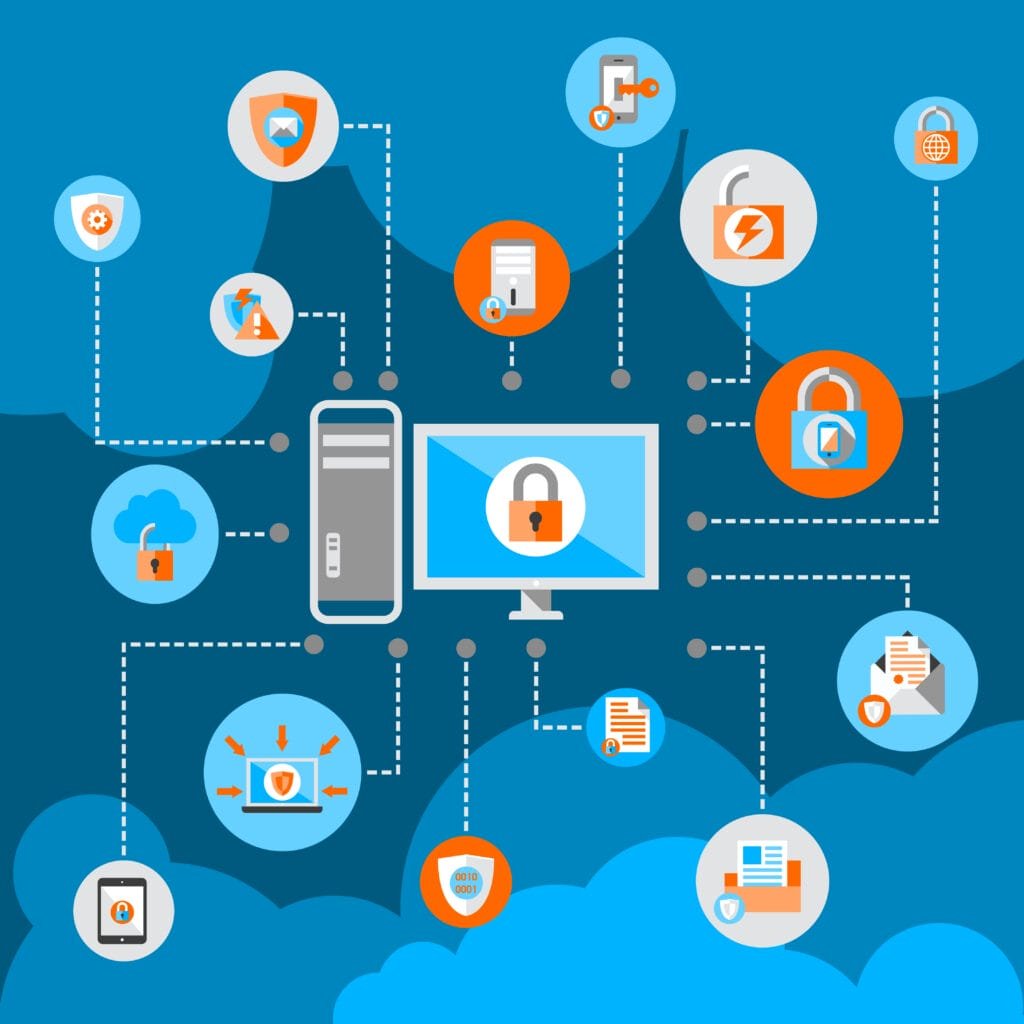Cybersecurity 2.0: Revolutionizing Your Business with Next-Gen Network Security Infrastructure
Introduction
As businesses increasingly rely on linked systems and data in the current digital era, protecting sensitive data is more important than ever. This essay examines the revolutionary concept of cybersecurity 2.0 and how implementing Next-Gen Network Security Infrastructure can revolutionize businesses.
Definition of Cybersecurity 2.0
Cybersecurity 2.0 represents a paradigm shift in safeguarding digital assets. It goes beyond traditional security measures, leveraging advanced technologies to combat increasingly sophisticated cyber threats.
Importance of Next-Gen Network Security
Our defenses have to change with the latest cyber threats. With its proactive approach, Next-Gen Network Security keeps hackers one step ahead of the game.
Addressing evolving cyber threats
An ever-evolving cyber threat landscape demands a dynamic and adaptable security infrastructure. This requirement is met by Cybersecurity 2.0, which integrates innovative techniques and technologies.
Evolution of Cybersecurity
It is essential to understand the transition from conventional security measures to state-of-the-art Cybersecurity 2.0 in the constantly changing field of cybersecurity. This part explores the background information, the shortcomings of older systems, and the critical need for modern security solutions.
Traditional Security Measures
Businesses mostly relied on fundamental security measures like firewalls, antivirus software, and intrusion detection systems in the early days of the digital era. Although these technologies offered some security, their main purpose was to tackle relatively simple threats. Because of the speed at which technology is developing, criminals create increasingly complex and focused attacks, making traditional security measures less and less effective.
Limitations of Legacy Systems
Vulnerabilities are inherent in legacy systems because of their outdated technology and architecture. These systems frequently have trouble keeping up with the ever-changing landscape of cyber threats, which leaves companies vulnerable to possible intrusions. Slower reaction times, a lack of scalability, and an incapacity to understand the intricacies of modern attack vectors are among the drawbacks of outdated systems.
Need for Advanced Security Solutions
Advanced security solutions are desperately needed, as seen by the increasing frequency and severity of cyberattacks. Cybersecurity 2.0 acknowledges that a reactive security strategy is insufficient nowadays. Rather, it promotes being proactive by using modern technologies to anticipate, stop, and instantly address cyber threats.
The transition to Cybersecurity 2.0 signifies a calculated step away from only a defensive way of thinking and toward a more proactive and flexible security posture. This evolution recognizes that cyber threats are dynamic and necessitate a defense mechanism that is dynamic enough to learn from and adapt to cyber attackers’ ever-changing tactics.
Key Components of Cybersecurity 2.0
Businesses trying to improve their digital defenses have to understand the fundamental components of cybersecurity 2.0. The three main elements that make up the framework of the next-generation network security architecture are discussed in this section.
Artificial Intelligence and Machine Learning
The combination of machine learning (ML) and artificial intelligence (AI) is revolutionary in the field of cybersecurity 2.0. These technological advancements enable security systems to learn from patterns, anomalies, and past data, surpassing rule-based techniques. Large volumes of data can be analyzed in real-time by AI and ML algorithms, which may identify possible problems before they get worse.
AI improves cybersecurity by automating threat detection, enabling quick reactions to new threats. In contrast, machine learning algorithms are always changing in response to new threats, which helps them become better at differentiating between legal and malicious activity. Together, these two powerful tools not only offer a proactive defense but also significantly reduce false positive rates, allowing security professionals to concentrate on actual threats.
Zero Trust Architecture
The more sensible “never trust, always verify” model replaces the conventional “trust but verify” strategy in Zero Trust Architecture. The Zero Trust model is predicated on the idea that no entity, whether internal or external to the network, should be trusted by default in a world where cyber threats can come from both internal and external sources.
Businesses can improve their security posture by continuously verifying user identities and device identities by installing Zero Trust. Because access is only allowed to those who need to know, criminals are limited in their ability to move laterally. With this strategy, a threat’s ability to move laterally within the network is severely limited, even if it manages to obtain access.
Threat Intelligence Integration
Obtaining and utilizing real-time threat intelligence is a fundamental component of Cybersecurity 2.0. The process of gathering, evaluating, and sharing data on present and future cyber threats is known as threat intelligence. Organizations can stay ahead of the curve by using this intelligence to understand the strategies, methods, and tactics used by cyber adversaries.
By incorporating threat intelligence into security systems, companies can proactively modify their defenses in response to changes in the threat environment. Because of this real-time awareness, decisions may be made more quickly and intelligently, which lowers the possibility that cyberattacks will be effective. Furthermore, sharing threat knowledge between firms encourages teamwork in cybersecurity, putting up a united front against shared risks.
Benefits of Next-Gen Network Security

Businesses need to be aware of the concrete benefits that Next-Gen Network Security offers as they move toward Cybersecurity 2.0. The revolutionary benefits that companies can get from adopting sophisticated security solutions are discussed in this section.
Enhanced Threat Detection
The increased threat detection capabilities of Next-Gen network security infrastructure is one of its main benefits. Conventional security methods frequently find it difficult to keep up with the ever-evolving cyber threats. AI and ML-driven cybersecurity 2.0 is highly adept at identifying trends and abnormalities that could point to a possible threat. This extra sensitivity makes sure that even the smallest indications of malicious behavior are quickly detected.
Using ongoing network traffic monitoring and analysis, Next-Gen Network Security can spot unusual activity that could be a sign of a cyberattack. As a result, the business has a proactive defense system that may stop threats before they become more serious and limit their possible damage.
Improved Incident Response
A crucial component of cybersecurity is incident response, and Cybersecurity 2.0 greatly increases the efficiency and speed of response systems. Organizations can react quickly to security problems when they have automated detection and real-time threat intelligence.
Security teams can quickly begin remediation operations, control the threat, and isolate affected devices thanks to Next-Gen network security infrastructure. Processes for automated incident response are streamlined, allowing security professionals to concentrate on strategic decision-making instead of laborious human labor. This flexibility is essential for reducing the severity and length of a security issue.
Increased Resilience
Cybersecurity 2.0’s comprehensive approach helps to boost defenses against online attacks. Businesses can address several attack vectors with a multi-layered protection strategy by utilizing a variety of innovative technologies.
The efficacy of security measures is maintained over time by Next-Gen Network Security, which is made to adjust to emerging threats. This flexibility is critical in a setting where cyber threats are always changing. Cybersecurity 2.0’s enhanced resilience helps to protect vital resources, maintain operations, and ensure business continuity even in the face of determined cyber adversaries.
Implementing Cybersecurity 2.0
Cybersecurity 2.0 implementation requires a methodical and thorough approach. The main actions that businesses should take to switch from conventional security measures to Next-Gen network security infrastructure modern security solutions are described in this section.
Assessing Current Infrastructure
Organizations need to evaluate their present security infrastructure thoroughly before leaping to Cybersecurity 2.0. To determine the advantages, disadvantages, and potential vulnerabilities of the current technology, software, and policies, an evaluation is necessary.
The assessment needs to take into account the particular requirements and difficulties faced by the company. Determining the present level of cybersecurity readiness is the first step in developing a focused and successful implementation plan.
Choosing the Right Solutions
Making the appropriate technology and solution choices is essential to successfully using Cybersecurity 2.0. This choice should take into account the organization’s particular needs while still being in line with the infrastructure assessment’s conclusions.
Companies might have to spend money on AI-powered threat detection systems, sophisticated security platforms, and Zero Trust Architecture-supporting products. Scalability, simplicity of integration, and adaptability to new threats should all be taken into account during the selection process.
Employee Training and Awareness
To ensure strong cybersecurity, human involvement is just as necessary as technology solutions. Programs for employee awareness and training are crucial to the implementation of Cybersecurity 2.0.
It is essential to teach staff members about current cyber threats, social engineering techniques, and safe online conduct and practices. Employees who are aware of cybersecurity are better equipped to act as the first line of defense, which reduces the possibility that human mistakes may result in security breaches.
Organizations should model cyberattack scenarios, hold frequent training sessions, and encourage a cybersecurity awareness culture at all employee levels as part of the implementation process.
Real-world Examples

Examining real-world instances is crucial to understanding Cybersecurity 2.0’s practical ramifications. This section explores two case studies that demonstrate how Next-Gen network security infrastructure may be implemented successfully, highlighting the observable advantages and results that businesses that have adopted this revolutionary strategy have experienced.
Case Study 1: Company X’s Success Story
As an important player in the financial industry, Company X encountered a growing number of sophisticated cyber threats. They decided to completely switch to Cybersecurity 2.0 after realizing the shortcomings of their previous security procedures.
Company X significantly improved their security posture by combining AI-driven threat detection, Zero Trust Architecture, and ongoing threat intelligence updates. By enabling the early identification of formerly undetectable dangers, the enhanced capabilities mitigated the likelihood of data breaches.
Additionally, their incident response procedures were streamlined with the adoption of Cybersecurity 2.0. Workflows that were automated made it easier to contain and remediate issues quickly, which reduced downtime and possible losses. The success of Company X is evidence of the revolutionary potential of Next-Gen Network Security in a competitive market.
Case Study 2: Cybersecurity 2.0 in Action
Company Y, an international technology company operating in a different industry, adopted Cybersecurity 2.0 as a component of its digital transformation program. They implemented a variety of modern security methods in response to the difficulties posed by protecting an extensive and linked network.
By using AI and ML algorithms, Company Y was able to dynamically respond to new threats. Their network was bolstered by Zero Trust Architecture, which stopped lateral movement and illegal access. They were able to collaborate with colleagues in the sector and stay up to date on the constantly changing danger landscape through the integration of threat intelligence.
As a result, Company Y improved its cybersecurity defenses and acquired a competitive advantage by demonstrating its dedication to client trust and data protection. Their experience demonstrates how Cybersecurity 2.0 is a strategic enabler for businesses managing the intricacies of the digital ecosystem, not just a security precaution.
Challenges and Solutions
Although revolutionary, the adoption of Cybersecurity 2.0 is not without its difficulties. This section offers strategic strategies for ensuring an easy and successful transition while addressing major obstacles that companies may encounter.
Overcoming Implementation Challenges
Initially, there may be obstacles to implementing Cybersecurity 2.0, including as internal organization resistance, compatibility with current systems, and possible interruptions.
Solution: Prioritizing a clearly defined and staged implementation plan will help firms overcome these obstacles. Thorough communication with stakeholders, emphasizing the advantages of the shift, and resolving any concerns, should be part of this approach. Before a full-scale rollout, a pilot program might be started to verify that new solutions work with current systems. Adjustments are possible through ongoing monitoring and feedback loops, ensuring a more seamless transition without sacrificing security.
Addressing Resistance to Change
Resistance to change is common, especially when it includes changing long-standing security procedures. Stakeholders and employees may be reluctant to adopt new workflows or technology out of concern that it would interfere with their regular business operations.
Solution: Overcoming resistance requires effective communication and change management. Businesses should clearly outline the advantages of Cybersecurity 2.0 and highlight how the shift fits with their overarching goals. Training courses ought to cover the necessary cultural shift in addition to the technical aspects. Including important parties early on in the decision-making process encourages cooperation and a sense of ownership.
Continuous Monitoring and Adaptation
The world of cybersecurity is ever-changing, with new dangers appearing all the time. To keep abreast of changing threats, Cybersecurity 2.0 implementation requires ongoing monitoring, updates, and adaption.
Solution: To ensure continuous monitoring, it is imperative to form a specialized cybersecurity team or collaborate with outside specialists. Real-time visibility into possible threats is ensured by implementing automated systems for threat detection and response. Employees are kept up to date on best practices and the newest dangers through regular training programs. Businesses should have a continual improvement mindset and update their cybersecurity infrastructure regularly.
Future Trends in Cybersecurity
The cybersecurity landscape is set for additional transformation as technology advances. To help organizations become ready for the next stage of cybersecurity—Cybersecurity 3.0—this section analyzes the new trends that are likely to influence the field.
Emerging Technologies
- Quantum Computing: Cybersecurity faces both opportunities and challenges with the development of quantum computing. Although quantum computers can crack conventional encryption plans, they also present novel cryptographic methods that can improve security.
- Blockchain Technology: Mostly recognized for its use in cryptocurrencies, blockchain is becoming more and more popular in the cybersecurity space. It is a promising option for safe data storage and identity management because of its decentralized and impenetrable characteristics.
- 5G Technology: The introduction of 5G networks expands the attack surface while opening up new opportunities for devices that are networked. Future cybersecurity defenses will have to change to meet the particular difficulties brought on by the expansion of high-speed, low-latency networks.
Anticipating Future Threats
- AI-Driven Attacks: Cybercriminals are likely to use AI-driven strategies to avoid detection as AI becomes increasingly prevalent in cybersecurity defenses. AI will need to keep improving in this cat-and-mouse game to remain ahead of bad actors.
- Biometric Data Exploitation: Cyber risks that target biometric data are growing as a result of the growing use of biometrics for authentication. Future cybersecurity plans need to take into account the particular difficulties involved in protecting this extremely private and unique form of identification.
- Supply Chain Attacks: To hack multiple companies from a single point of entry, cybercriminals are focusing more and more on the supply chain. Strong supply chain security measures will be a key component of Cybersecurity 3.0 to stop cascading vulnerabilities.
Cybersecurity 3.0 Perspectives
- Integrated Security Ecosystems: Different security technologies and solutions will work together in harmonic ecosystems to share threat intelligence and smoothly communicate with one another in the future of cybersecurity. This cooperative strategy ensures comprehensive protection against different threats.
- Human-Centric Security: Plans will place a higher priority on human-centric security due to the crucial role that human factors play in cybersecurity. To reduce the possibility of human error, this involves not only raising staff awareness but also creating systems with user-friendly security features.
- Cybersecurity and Regulatory Compliance: As data privacy and protection become increasingly important, cybersecurity measures will more closely match regulatory standards. One of the most important components of Cybersecurity 3.0 will be compliance with international regulations and standards.
Organizations need to approach Cybersecurity 3.0 with an agile, forward-thinking mindset. Encouraging a comprehensive cybersecurity approach, embracing innovative technologies, and anticipating potential attacks are essential to protecting digital assets in the quickly changing digital ecosystem.
Conclusion
Implementing Cybersecurity 2.0 is a critical step forward for businesses looking to fortify themselves against a growing collection of increasingly sophisticated cyberattacks in the dynamic world of digital threats. The main innovations of Cybersecurity 2.0 are outlined in this concluding section, which also makes a strong case for businesses to adopt the next-generation security paradigm.
Recap of Cybersecurity 2.0 Advancements
Cybersecurity 2.0 is a paradigm change from traditional security measures to a more proactive and flexible defense strategy, as explained in the parts that precede it. Real-time Threat Intelligence Integration keeps businesses ahead of emerging threats, Zero Trust Architecture redefines the concept of trust, and the integration of AI and machine learning improves threat detection capabilities.
The advantages of Cybersecurity 2.0 are also extensive, extending from better incident response and threat identification to greater resilience against changing cyber threats. The given case studies demonstrate how actual businesses have effectively managed this transition, gaining both enhanced security and competitive benefits in their respective fields.
FAQs
What makes Cybersecurity 2.0 different from traditional security?
Cybersecurity 2.0 goes beyond traditional measures by incorporating advanced technologies like AI and ML for proactive threat detection, implementing Zero Trust Architecture, and integrating real-time threat intelligence, providing a more adaptive and robust defense.
How can businesses ensure a smooth transition to Next-Gen Network Security?
A smooth transition involves a thorough assessment of the current infrastructure, choosing the right solutions based on organizational needs, and prioritizing employee training. Effective communication and change management also play a crucial role in overcoming resistance to change.
Are there any industries that have already benefited from Cybersecurity 2.0?
Yes, industries such as finance and technology have seen significant benefits. Case studies, like that of Company X in the financial sector, showcase successful implementations of Cybersecurity 2.0 and its positive impact on security posture.
What role does employee awareness play in cybersecurity implementation?
Employee awareness is crucial as human error remains a significant factor in cybersecurity breaches. Training programs educate employees about cyber threats, fostering a culture of security awareness and reducing the risk of unintentional security lapses.
How often should a company update its security infrastructure?
Security infrastructure should be regularly updated to stay ahead of evolving threats. Continuous monitoring, assessments, and updates ensure that the security measures remain effective in the face of new cyber challenges.







